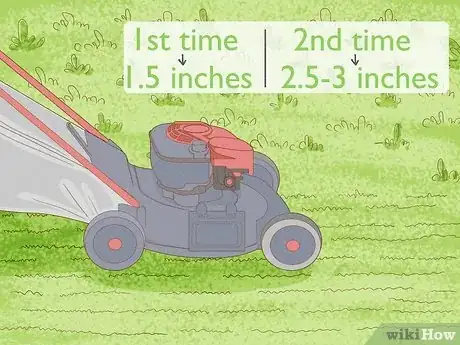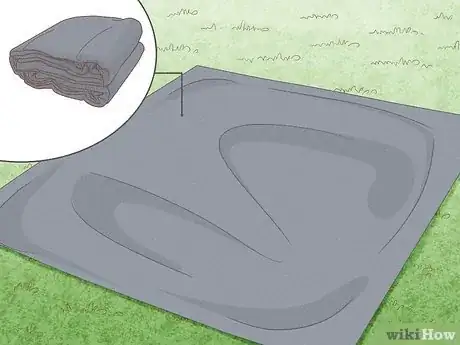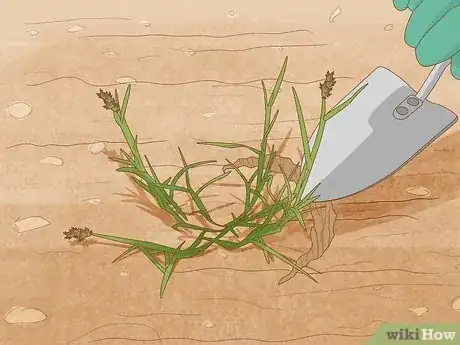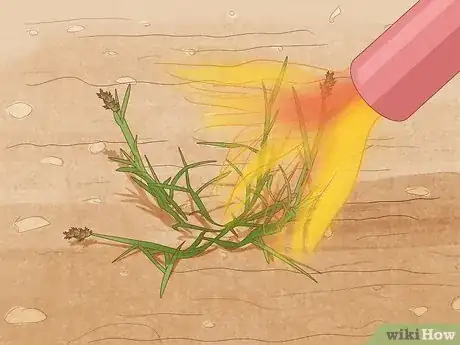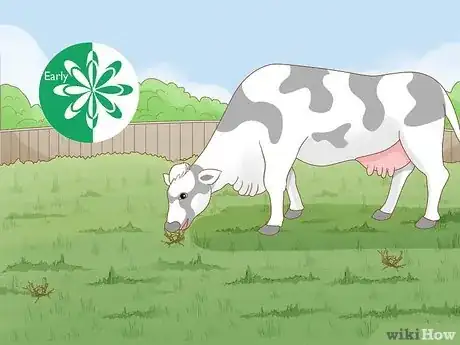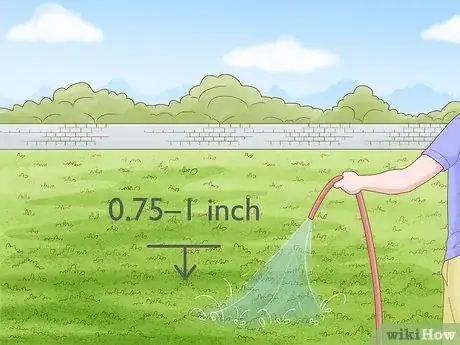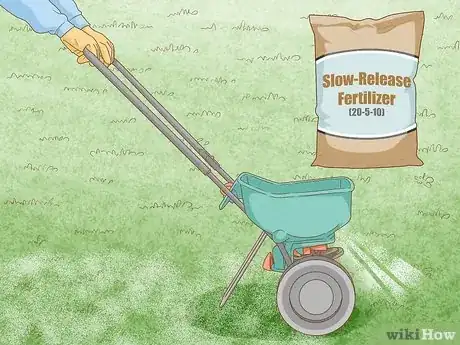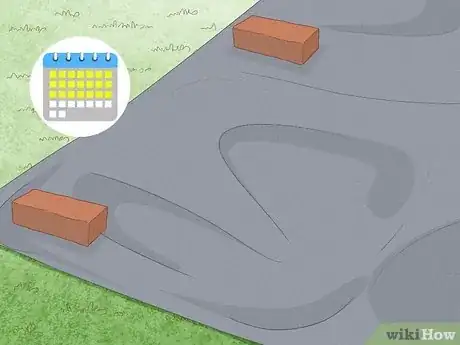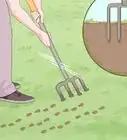This article was co-authored by wikiHow staff writer, Luke Smith, MFA. Luke Smith is a wikiHow Staff Writer. He's worked for literary agents, publishing houses, and with many authors, and his writing has been featured in a number of literary magazines. Now, Luke writes for the content team at wikiHow and hopes to help readers expand both their skillsets and the bounds of their curiosity. Luke earned his MFA from the University of Montana.
There are 10 references cited in this article, which can be found at the bottom of the page.
This article has been viewed 3,007 times.
Learn more...
Your lawn is your achievement, your safe haven, the shining green jewel of your home. At least, that is, until you venture out into your lush turf and stick your foot right into a sandbur, coming away with enough prickly pods to bring tears to your eyes. Sand spurs are an insidious and all-too-common lawn infiltrator, but they aren’t impossible to eradicate, which is why we’ve compiled a list of 12 simple strategies to ward off these wily weeds.
Things You Should Know
- Mow over sand spurs with a bag attachment, or drag an old blanket over your lawn to collect and dispose of mature sandbur pods.
- Use a post-emergence herbicide to fight mature sandburs, and a pre-emergence herbicide to prevent them early in the season.
- Water, fertilize, and grow native grasses to promote a healthy lawn that stifles and outcompetes weeds.
Steps
Mowing
-
Mow low to the ground, then higher up. Put a bag on your lawnmower to collect any sandbur seeds you mow over, then mow your lawn with your mower at a low setting, about 1.5 inches (3.8 cm) off the ground, to collect low-growing seeds.[1] X Trustworthy Source EDIS Electronic database of the University of Florida Institute of Food and Agricultural Sciences's peer-reviewed articles Go to source
- Then, the next time you mow your lawn, keep the mower 2.5–3 inches (6.4–7.6 cm) off the ground. This will keep the grass high, which will stifle further sandbur growth.[2] X Research source
Blanket removal
-
Drag an old, fibrous blanket over your lawn to pick up burs. It might sound a bit wonky, but wonky can work. Find an old blanket you don’t mind soiling (preferably one that’s worn and fuzzy, like velcro), and drag it across the length of your lawn to lift burs from the grass.[3] X Research source Then, use a pair of gardening gloves to remove the burs from the blanket and dispose of them in a garbage bag.
Post-emergence herbicide
-
Apply chemical herbicide to sprouted sand spurs. While post-emergence herbicides aren’t super effective against established annual weeds, they can still help keep the population at bay. Which herbicide you’ll use depends of what type of grass you have in your lawn—select one that will kill the weed but not the grass:[4] X Trustworthy Source EDIS Electronic database of the University of Florida Institute of Food and Agricultural Sciences's peer-reviewed articles Go to source
- For bermudagrass lawns, use any herbicide that contains the ingredients nicosulfron, metsulfuron, imazapic, or glyphosate. Follow the instructions included on the packaging label for application methods.
- For all other grasses, use a glyphosate herbicide with 0.5% concentration. This will target the sandburs and spare your lawn. Consult the product’s packaging for safe herbicide application instructions.
Hand-weeding
-
Identify and pull sand spurs by hand. Pull on a pair of gardening gloves and get your weeding tool handy. Once you’ve identified a sandbur, pull the weed by digging a few inches into the soil at its base and ripping up the bulk of its shallow root network near the stem, then discarding the whole plant into a secure plastic bag to prevent propagation.[5] X Research source
- Sand spurs have long green stalks that are red toward the bottom and creep close to the ground; broad and flat leaf blades with fuzz on the top that feels like sandpaper; and of course, the eponymous burs—can’t miss those—growing out of a long flower on top.[6] X Research source
Burning
-
Use a flame weeder to burn away mature sand spurs. Tour your lawn and take a torch to any sand spurs you find. Hold the flame weeder nozzle a minimum of 3 inches (7.6 cm) from the weed to kill it. Be sure to torch the entire plant to eliminate any growing points from which it might reemerge, but take care not to torch your lawn (though some burnt grass is inevitable).[7] X Research source
- Reseed your lawn in areas you may have scorched in order to regrow the grass and prevent further sandbur growth.
Livestock grazing
-
Graze cows in the early spring to remove sandbur sprouts. You can safely graze your livestock in a pasture with a sandbur problem in the early months of spring and summer (April-June). At this point, sandbur hasn’t yet developed its signature burs, and livestock can munch on it to keep it in check.[8] X Trustworthy Source EDIS Electronic database of the University of Florida Institute of Food and Agricultural Sciences's peer-reviewed articles Go to source
- Avoid grazing your livestock in sandbur-laden pastures after the plant has flowered and produced burs. These burs can harm your livestock if eaten.
Pre-emergence herbicide
-
Prevent sand spurs by applying herbicide before the growing season. Use a pendimethalin pre-emergence herbicide like Prowl H20 across your whole lawn. Apply the herbicide at 1.1–4.2 US quarts (1.0–4.0 L) per acre, or as directed on the packaging label during the winter, when your lawn is dormant, but just before the growing season, around March-April.[9] X Trustworthy Source EDIS Electronic database of the University of Florida Institute of Food and Agricultural Sciences's peer-reviewed articles Go to source
Watering
-
Water your lawn deeply but infrequently to promote grass growth. Only crank those sprinklers when the entire lawn appears dry. Prime the sprinklers to apply 0.75–1 inch (1.9–2.5 cm) in the early morning, and don’t water again until the lawn shows signs of stress.[10] X Research source This keeps your grass healthy, which in turn crowds out weeds.
- Easy tells of a stressed or dry lawn are a slightly bluish color or grass that feels brittle when you walk on it.
- Watering practices vary greatly by location, rainfall, grass type, and other factors, so contact your local agricultural commissioner to ask about the best practices for your area.
Fertilizing
-
Apply a fertilizer early in the season to keep your lawn healthy. Choose a fertilizer high in nitrogen (one that has something like “20-5-10” on the bag, which is the ratio of nitrogen, phosphorus, and potassium in the fertilizer). Distribute slow-release fertilizer across your entire lawn in mid-late April, then again about 4 weeks later, and then every 6-8 weeks after.[11] X Research source
- Use a spinner fertilizer spreader for easy application—walk at a steady pace along the length of your yard, overlapping your application just slightly to ensure an even spread.
Corn gluten meal
-
Apply corn gluten meal to inhibit weed growth. Corn gluten has key proteins that stifle a number of weeds at the germination stage. Pick some up from your local garden center, and apply it to your lawn in April, or just before your lawn's growth period. Scatter the meal according to the package's application instructions.[12] X Research source
- Don’t apply corn gluten after your lawn (and the weeds) have matured, as this will only give the weeds an unwanted boost in nutrients.
Solarizing
-
Place a black tarp over your lawn to start from scratch. Purchase a large span of black lawn tarp from your local garden center, one that will cover your entire lawn. Then, prepare your lawn by watering and fertilizing beforehand. Finally, stake tarps across your lawn and weigh them down with bricks, and wait 2-3 weeks until everything beneath is dead.
- This is the nuclear option, but it’s an understandable measure when pesky sand spurs keep sticking your feet all season.
- After you’ve culled your lawn, aerate it and spread new grass seeds to get your new lawn growing again.
Planting fresh grass
-
Plant a new lawn using a native grass species. Native species that thrive in your local area naturally are great for weed prevention—they can keep up and even control weed populations, since they’re suited for growing in the local conditions, which isn’t true for many grass types; most likely, your lawn’s grass isn’t a native species. Contact your local agricultural commissioner for recommendations on which grass types grow best in your area.[13] X Research source
- Plant new grass early in the season or after solarization for the best possible growth during spring and summer months.
You Might Also Like
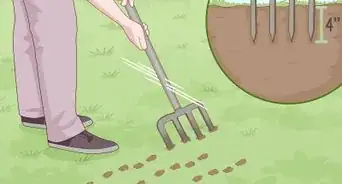 How to Level Bumps in Your Lawn with or without a Roller
How to Level Bumps in Your Lawn with or without a Roller

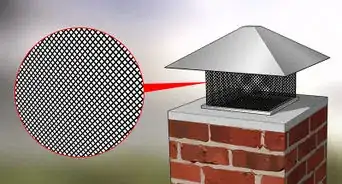

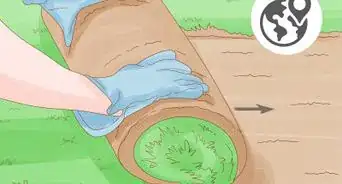
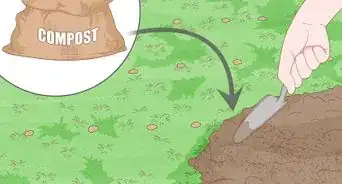
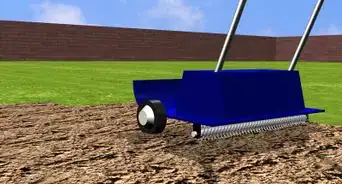

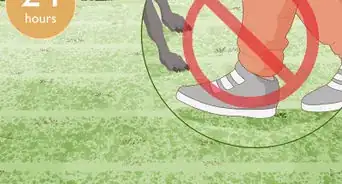


References
- ↑ https://edis.ifas.ufl.edu/publication/AG373
- ↑ https://apps.extension.umn.edu/garden/diagnose/weed/grass/longspinesandbur.html
- ↑ https://richmond.ces.ncsu.edu/2014/08/take-the-sting-out-of-sandspurs/
- ↑ https://edis.ifas.ufl.edu/publication/AG373
- ↑ https://cals.arizona.edu/cochise/mg/faq-57
- ↑ https://www.lcsun-news.com/story/life/sunlife/2019/02/10/timing-everything-when-trying-control-goatheads-and-sandburs/2807176002/
- ↑ https://extension.umd.edu/resource/flaming-weed-management-tool
- ↑ https://edis.ifas.ufl.edu/publication/AG373
- ↑ https://edis.ifas.ufl.edu/publication/AG373
- ↑ https://hgic.clemson.edu/factsheet/zoysiagrass-maintenance-calendar/
- ↑ https://www.popularmechanics.com/home/lawn-garden/how-to/g237/the-quick-and-easy-guide-to-fertilizing-your-lawn/
- ↑ https://midwestgrowsgreen.org/corn-gluten-meal-the-dos-and-donts/
- ↑ https://weedcut.ipm.ucanr.edu/management-practices/competitive-planting/#gsc.tab=0
About This Article

